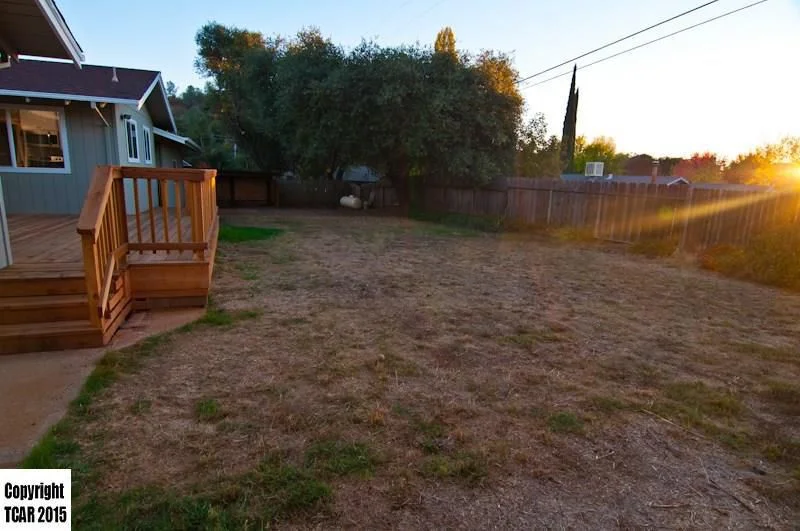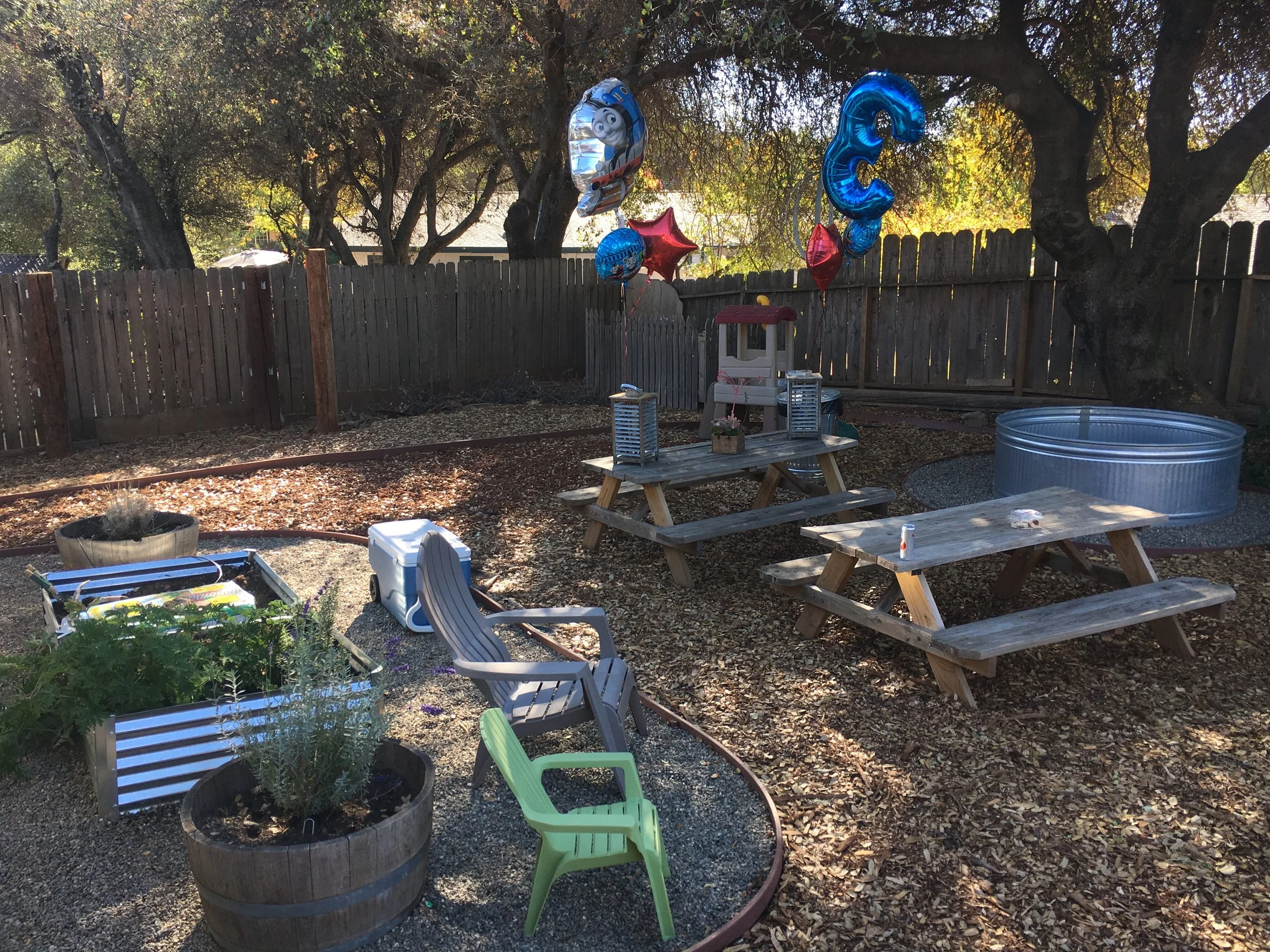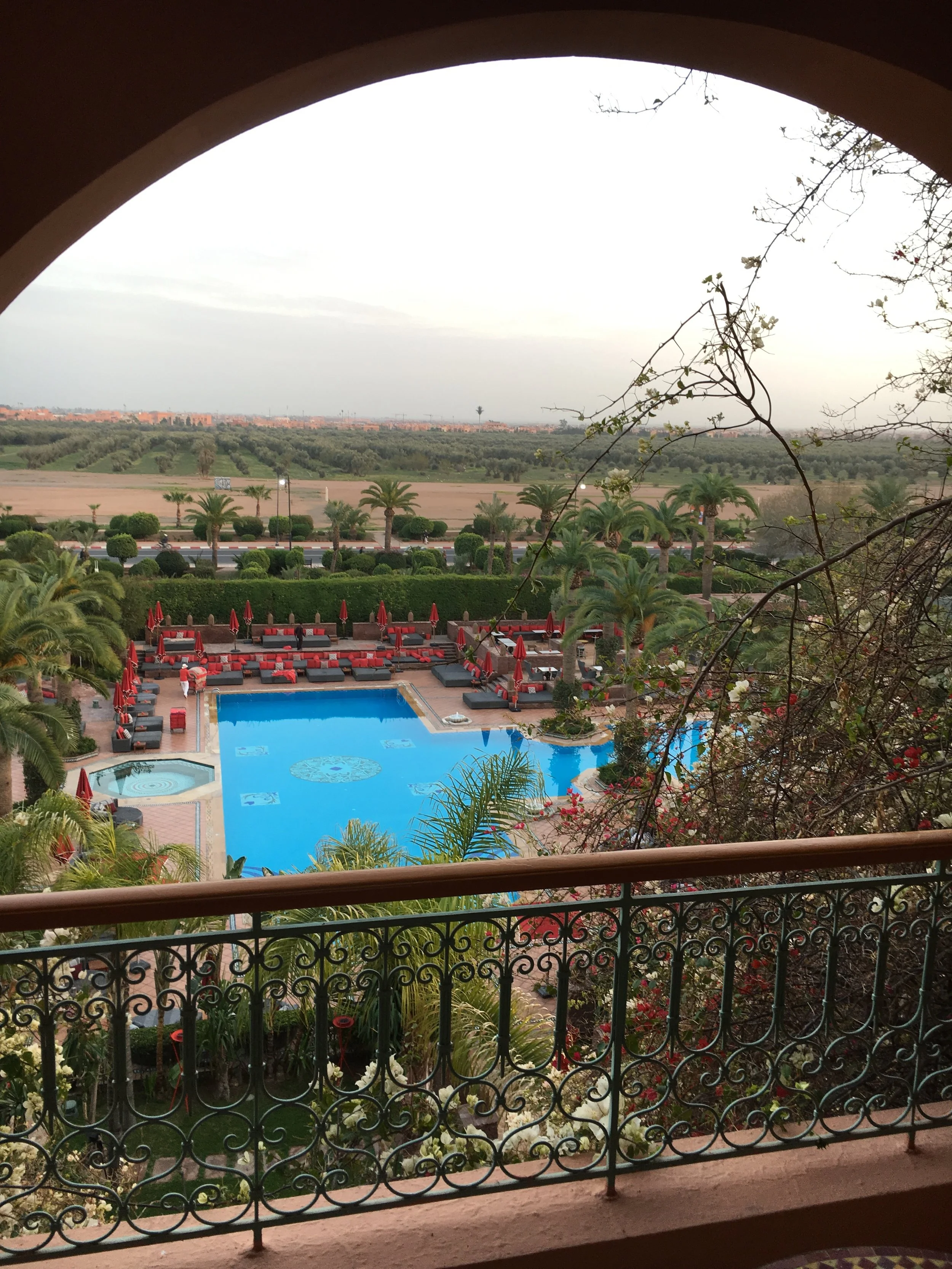Our Summer "Break"
Before and After
Seeing Things Differently
Like everything these days, expressing an opinion is the surest way to find yourself in a idealogical box of some kind. "He's a hippie" they said. "He doesn't care about the environment" they said. I don't know who "they is" most of the time, but "they" probably haven't logged many hours on a farm. This is unfortunate.
Avoiding political minefields is partly the reason behind my reluctance to dive into a variety of topics, but today I'm pressing forward. I must acknowledge that I've been dabbling with some of the principles of permaculture. For those familiar with this topic, you understand that it carries with it a reputation (earned or unearned) for being unscientific. For those of you who are not familiar, "founder" Bill Mollison describes permaculture as a...
"philosophy of working with, rather than against nature; of protracted and thoughtful observation rather than protracted and thoughtless labour; and of looking at plants and animals in all their functions, rather than treating any area as a single product system."
Protracted observation. This theme has come up over and over again in my lifetime - particularly in landscaping, theology, and parenting. It is the idea that sometimes our "thinking" evolves; the way we see things changes because of time, orientation and understanding. For me, mowing over this Spring's super-bloom highlighted a new footprint for our land's vineyard and in a moment, all of my plans changed.
I'm stating the obvious: "thinking evolves." While permaculture can't claim this idea, I am forced to accept that my plans, the suggestions of paid consultants, and academics alike can all crash in a moment of epiphany. Permaculture provided an agricultural context for a philosophical idea. Today I saw a new pattern in the land. A new approach. A new path through the guidelines provided by the trees.
Some of my life's most sincere reflections often correspond to ideas that I'm learning from our land. I'm forced to accept new realities about myself (the land); my interpretation of myself (the land) changes - and after years of working AGAINST something, I could probably find relief working WITH something.
Not Just Grapes...
This past week I extended a work trip to conduct some "research" at Davero Farms & Winery in the beautiful town of Healdsburg. While much of our research and preparation has focused on establishing grapes, Sarah and I have also desired to add some privacy to our property using olive trees.
Before scheduling my site visit, I spoke to owner Colleen McGlynn via phone and fielded her questions about our climate, soil type, and elevation in Columbia. When I arrived, it was no different. You see, Davero is concerned about applying biodynamic principles on their farm. This is reflected in their motto, "Grow what belongs here. Be patient." While I walked away with specific advice on olive row spacing (10x17), how they harvest using this Stihl tool, I found her convictions about exclusively growing Italian olive and grape varietals the most informative:
"...But what really matters is that our climate is Mediterranean (one of seven in the world), characterized by hot, dry summers with cool nights...Which is exactly like the Italian peninsula — and exactly the inverse of the climates of Bordeaux and Burgundy which have cooler, wet summers with warm nights, and are roughly 1000 miles north of where we are."
Vine Rows
View: This is the smaller of our two planting sites; I have started establishing preliminary markers for our t-posts in this section because it is the most square. Originally I had determined to use 7x7 spacing; that is, seven feet between rows and seven feet between posts. I am now considering using eight foot spacing to provide more room for cover crop management and mowing. Oh, and by the way...getting rows straight is MUCH harder than it looks.
The Golden Mean
"Ask three vineyard managers a question, you'll get five different answers."
Should soil be ripped or lay fallow?
Should you irrigate or should the vines be stressed?
Should spacing be tight to promote competition or wide to reduce irrigation?
Like all disciplines, vineyard consultants offer strong opinions on the way things "ought to be done." This couldn't be more true in the wine industry, which can sometimes feel like one part agriculture for every three parts marketing and style.
As my understanding increases, so does my humility. I find that the most humble folks in this industry are the academics, who must support all assertions with repeatable and clinically proven trials. As a result, unless they know exactly why "red blotch" (a disease spreading among vineyards in the Sierra) is spreading and exactly which "vector" (the pest that carries the disease from plant to plant), they hesitate to suggest a remedy.
So how do we ever make decisions? For me, I try to identify a middle path. What are people saying on each side, and where do they meet in the middle. In the end, no one will have spent more time knowing our land than me. I know where the sun rises in the Winter and sets in the Fall. If our aim is to produce high quality wine grapes, we'll find the middle path that which is informed by the most sustainable agricultural practices that have a demonstrated effect on the vine's health.
On The Division of Labour
Surprise surprise, my favorite class in high school was economics. When my instructor jokingly offered extra credit for anyone who reviewed Adam Smith's The Wealth of Nations, I was the only one who took him seriously. Then I did it; I read Adam Smith and was introduced to wisdom incarnate.
Specifically, I remember being captivated by Smith's explanation of "specialization." This idea acknowledged that people have different skills, and that those skills when applied as narrow parts could create a much more beautiful and efficient whole. This understanding has permeated every part of my life, and more recently, viticulture...
The Academic: Last week I met Dennis Gray; on Sabbatical from The University of Florida. He came to our property to survey our project and I participated in his research on viticultural coursework that could and should be offered at Columbia College. His academic research back home focuses on understanding the genomic structure of Pinot Noir and developing a varietal that was naturally more resistant to powdery mildew. Brilliant.
The Vineyard Manager: AKA, horticulturalists. These are the practioners with extensive local field experience. For me, Stephen Collum and Mark Skenfield have advised our property as local vineyard consultants. They understand practical concerns like vineyard design, pest control, irrigation, etc. Perhaps these folks, of all viticultural disciplines, are the most broad based.
The Winemaker: The chemist. That's my description, and actual winemakers may see themselves differently. That said, they are responsible for everything from harvest to bottle. They mind things like brix (the sugar content of grapes), fermentation, aging, and practical matters such as bottling.
These descriptions are far too narrow to be comprehensive, and not broad enough to acknowledge other important roles such as marketing and distribution. That said, in the last 18 months I have come to develop a deep appreciation for how unique each of these roles are, while appreciating those who wear all three hats. For now, Sarah and I are focusing our efforts on vineyard management... because we're going to need a backyard anyway, and it might as well be a vineyard...
J&SK
Cheap Stakes
Yesterday I took a drive to Caruthers, California. It was a classic Craigslist deal: Drive to the middle of nowhere, pull up to a random home, and score a deal under nearly regrettable circumstances. The town itself is quite literally, smack dab in the middle of California. Tucked just south of Fresno in-between Highway 5 and 99, Caruthers is one of those anonymous farming communities that without their existence, we'd have to live with less corn, table grapes, and almonds in our world.
I bought stakes. I had intended to purchase 800 of them, but only 500 were available and met our needs. The stakes will be used to train our vines vertically in their early years. If we decide to "head train" our vines, we'll only use these posts for the first five years and then the vine will support itself. If we decide to install a trellis system, these post will remain permanently. More on that later...
500 Stakes @ 75 cents per piece + 1 Post Pounder @ $29.99 = 2016 Gym Membership
J&SK
Good Soil
It shouldn't come as a surprise that soil is one of the most important components of plant nutrition. While chemical fertilizers can supplement a vine's development, I don't want to miss the opportunity to take advantage of natural ways to build life into our soil. For inspiration, I have taken to Lon Rombough's The Grape Grower - A Guide to Organic Viticulture. He notes that "in healthy, well balanced soil, an amazing, complex web of life is working constantly, creating a series of chemical and physical events on which plant life depends."
One component of healthy soil that we're introducing to our property in Springfield is local turkey compost. Today, Jessie Cover delivered roughly 20 yards of compost from Diestel Turkey Ranch. Having recently ripped the soil, we're now ready to begin spreading the turkey compost and gypsum mix to begin building our soil. In reality, we started building our soil last Fall when chose not to use a pre-emergent weed control and instead purchased a cultivator to turn over all vegetation back into the topsoil. Today's work is just another small step in producing good fruit.
J&SK
Fix a Flat
Just a flat tire...on our tractor. Another reminder that we're not in Orange County anymore. And no (because my mother asked), tractors are not covered by AAA.
On the plus side I didn't need a jack to lift the tractor off the ground, that's what the loader is for. I was able to easily take the tire off, call in an order to our local tire shop, and expect to be back up and running tomorrow.
Interesting note, tractor tires are often filled with air and a combination of water, calcium chloride, or anti-freeze to weigh down the tractor and keep the center of gravity low.
J&SK
Bawk Bawks
Please welcome Rosemary, Helen and Gladys. These ladies were born on July 5, 2016 - Sarah's 31st birthday, which I guess makes today's purchase 'meant to be.' We started considering raising chickens once we moved to the foothills. Since then, we've been waiting for the right time, season, and an extended period at home to watch them grow. Someone else has shown an interest too...
Bawk bawks. That's how little john identifies chickens. Over the past few months, he has become fascinated. Frequently Sarah will take him to Columbia where a coop full of Americanas call home - he loves these trips...BAWK BAWK, Bawk Bawk! We have had an empty chicken coop for two months, and he will eagerly approach it and look at me, asking Egg? Egg? Bawk bawk? Today we obtained three Americana pullets; they are adjusting to their new accommodations with a curious toddler and even curiouser dog, Abbey, right along side.
From a viticultural perspective, chickens have been used for biodynamic purposes. As chickens roam the vine rows, they feed on pests, produce beneficial waste, and scratch through the topsoil to enrich its content. Three chickens will not make a dent across 800 vines, but our small start allows us to learn about their needs and lifecycle in case we decide to add more later.
J&SK
Plots & Plans
Today I met with Stephen Collum once again at the property in search of "adult supervision." At a later date, I'll do a write-up exclusively on his role in our process so as to recommend his company, Vineyard Concepts. In the meantime, he arrived today and measured out our plantable area provided me with my homework over next few months.
1. Remove all large stones and boulders that were unearthed when Garry ripped the property.
2. Purchase 15 yards of turkey manure from Diestel Turkey Ranch to build up organic matter.
3. Purchase 500 pounds of water-soluble gypsum to loosen clay soil.
4. Mix and spread aforementioned manure and gypsum blend throughout the vineyard site.
5. Purchase and place 800x four ft. T-Posts; 5x5 spacing on hill and 7x7 spacing on slope.
6. String 13 gauge steel wire for drip irrigation system.
In less than 60 minutes, Stephen gave me three months worth of part time work.
J&SK
Meet Garry
Meet Garry Petts. At age sixteen, he began a career operating heavy equipment. He's now in his late seventies and he hasn't stopped. That's 60 years working.
Garry is resourceful. Over time he has acquired heavy equipment from a variety of sources. My favorite was his 6X6 water truck; he purchased the truck at an army surplus auction many years ago and personally fabricated the water tank and pump equipment. He did this himself. During fire season, Cal Fire and other local agencies regularly dispatch Garry to the most remote areas on the toughest terrain to refill pumpers battling the flames; they send him deep into the action because his is the only truck that can make the journey. As he said, "the young guys with the nicer trucks get to stay where its safe."
When Garry accepted the job to rip our property, he committed to a start date, a two day timeline for completion, and a very reasonable cost estimate for the scope of work. In reality, he showed up the night before to deliver his equipment, started early the next morning, and pushed himself to complete the job in one day. While he normally doesn't like to "push it" he did mention that he was motivated to complete the job and beat the heat. Today's temperature peaked at 106 degrees.
Garry completed his work as promised, except that he was ahead of schedule and under budget. It was nothing short of inspiring. Today I felt like I traded places with Mike Rowe from Discovery's Dirty Jobs. In just a few hours my curiosity about Garry's work was transformed into reverence for Garry's work.
Garry Petts Construction
Murphys, California.
J&SK
Deeply Rooted
As I recently described, today we had a bulldozer come to our property to "rip" the soil. Because our land has sat unkept and uncultivated for years, the soil is hard, parched, and remains unsuitable for healthy root growth. While our personal tractor has been excellent for weed control and topsoil management, we still need heavier equipment to rip the earth more deeply.
Ripping the soil allows a young root to more easily dig deep and establish itself during a plant's early lifecycle. I have heard some nurseries refuse to sell rootstock to vineyard managers who have not ripped their soil; the young vine may perish under the difficult task of establishing its roots. By spending more time and energy building our soil now, we hope that a young vine will have every opportunity available to mature and develop over time.
J&SK
Boundaries
"The 'dozer is coming tomorrow to rip." I said that to Sarah this week. I'm not sure if I am more surprised that I said it, that she understood it, or both. Either way, it is one small indication of how our vocabulary, interests, and time spent have evolved over the past 18 months.
The 'dozer coming to rip translates into this: A bulldozer is coming to our property to drive a "ripper" deep into the hard, dry soil throughout our property. I'll explain more about the importance of this work tomorrow. That said, it is critically important that we clearly provide boundaries to keep the dozer from ripping through power, water and sewer lines.
When the machine arrives to scar our soil deeply, it can't be easily undone. To keep the bulldozer away from critical items, we use flags as boundaries. The flags identify an exclusion zone in which we literally put a stake in the ground to enforce a line that shouldn't be crossed. They are not suggestions. If the operator becomes distracted, he or she could unintentionally cause costly (though not irreversible) damage. In this case, it's just wise to have clear boundaries, arrived at in advance, with decent margins.
J&SK
The Beginning
This is the beginning of The Vineyard at Springfield. This online space has been set aside for the purpose of documenting what may someday become a vineyard, a farmhouse, and most importantly, the place where our family calls home. Thank you for walking alongside of us.
J&SK



































